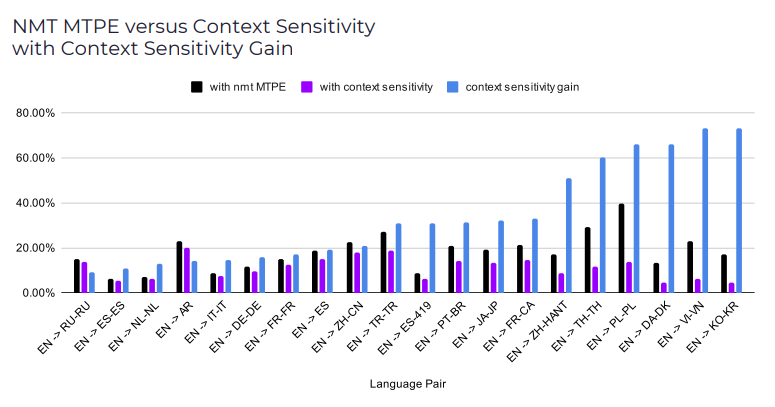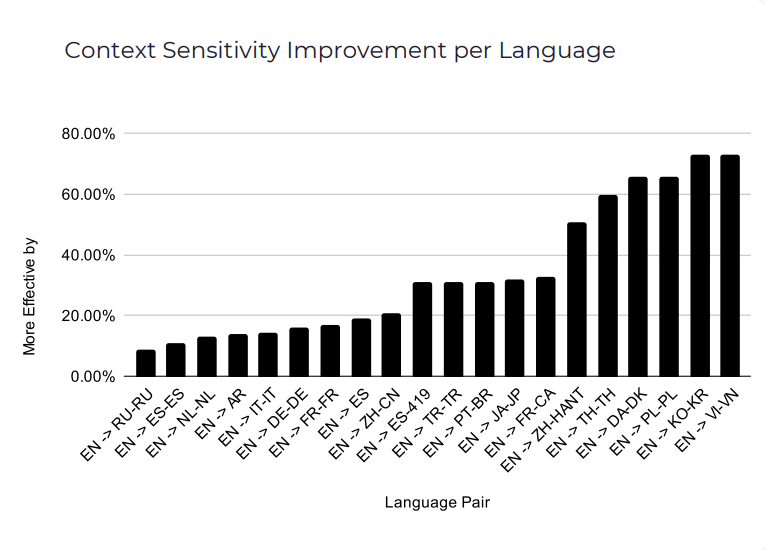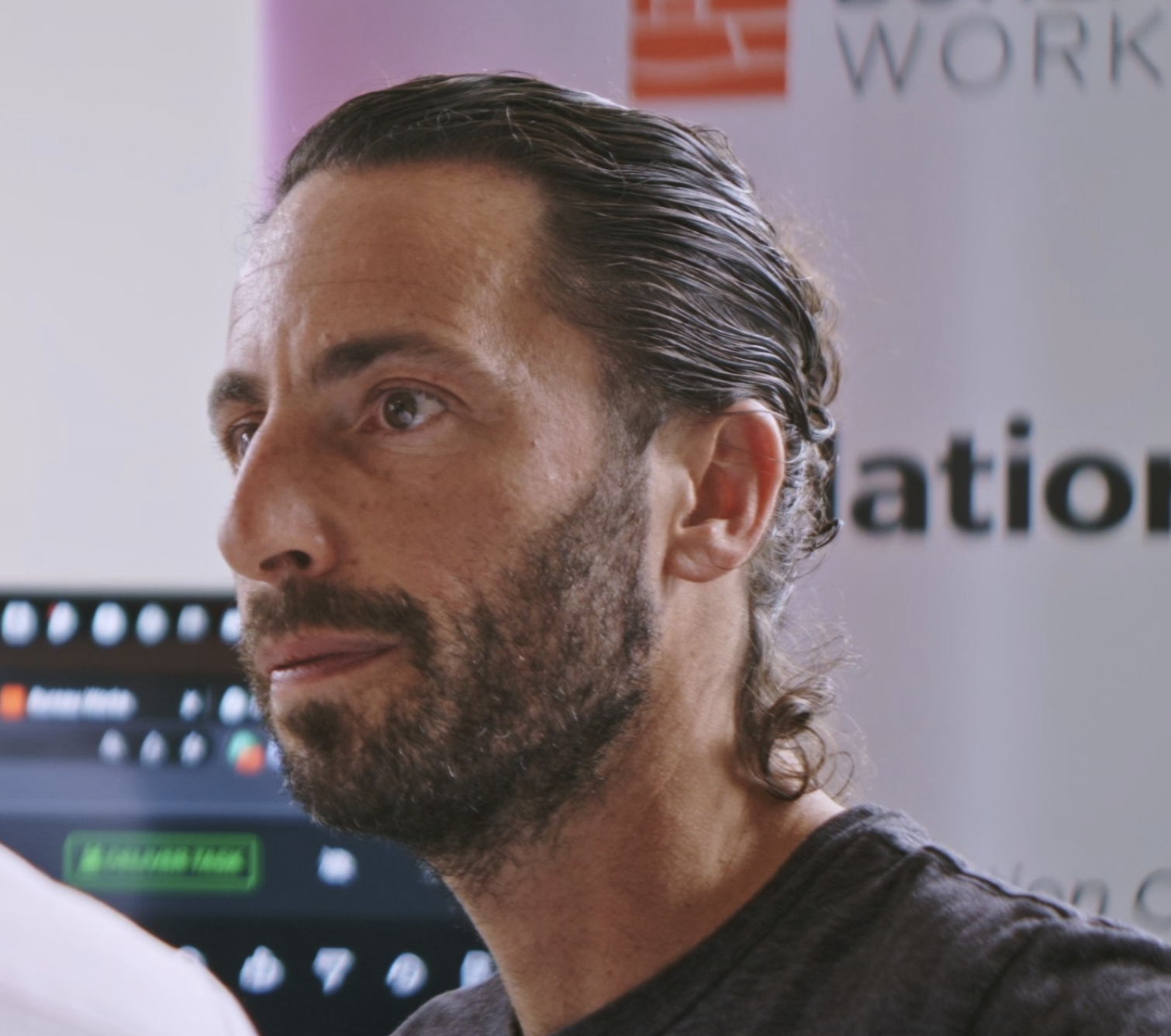- Home
- Resource Center
- Articles & Videos
- How AI Is Boosting Productivity, Not Replacing Translators
26 January 2025
How AI Is Boosting Productivity, Not Replacing Translators
Artificial intelligence (AI) is often seen as a disruptor, and nowhere is this more evident than in the translation industry. Headlines proclaim that AI is here to replace translators, fueling fears across the profession. According to a recent survey by the Society of Authors, a third of translators and a quarter of illustrators’ report losing work to AI, adding to these concerns. But what if the reality is far less dystopian? What if, instead of taking over, AI is empowering translators to work faster, smarter, and with better results?
Recent research from Bureau Works, a leader in translation technology, tells a compelling story. It reveals that AI isn’t a rival to human translators but an ally, enhancing productivity and improving workflows. Let’s dive into the data and explore what this means for the future of translation.
AI is reshaping translation—for the better
The Bureau Works study analyzed over 4.3 million translation segments to compare traditional machine translation post-editing (MTPE) methods with their Context-Sensitive Translate (CST) technology. The findings are eye-opening: CST improved Translation Error Rate (TER) by an average of 39%, meaning translators had to make significantly fewer changes.

Source: Bureau Works.
This isn’t just a win for efficiency. By reducing repetitive tasks, AI is enabling translators to focus on higher-level linguistic challenges, like refining tone and ensuring cultural relevance. In other words, it’s not about machines replacing humans; it’s about machines amplifying what humans do best.
The myth of the translator’s obsolescence
It’s easy to see why some believe AI might spell the end of the translator’s role. After all, tools like neural machine translation (NMT) are producing increasingly fluent output. However, the Bureau Works study demonstrates that AI alone isn’t enough. While NMT provides a solid foundation, it’s the human touch that ensures translations resonate with audiences and meet professional standards.
For example, CST doesn’t merely generate a machine translation feed; it integrates translation memories, glossaries, and previous translator edits into its suggestions. This continuous learning process ensures that the output aligns with both client preferences and linguistic nuances. Translators are not being replaced; they’re becoming indispensable parts of a symbiotic system.
Productivity gains in numbers
The Bureau Works report offers hard data to back up these claims:
● Translators using CST were able to reduce TER by 22.08% on average.
● Some language pairs, such as English to Korean and Vietnamese, saw productivity gains as high as 73%.
● Context-Sensitive was 39% more effective than traditional MTPE on average.
● By minimizing the time spent on repetitive corrections, translators can take on more projects, increasing their earning potential without sacrificing quality.

Source: Bureau Works.
These numbers aren’t just statistics; they’re a glimpse into a future where translators are empowered to do more with less. AI isn’t sidelining them; it’s putting them at the forefront of a more efficient industry.
Why “context” matters in AI-assisted translation
A key differentiator in the CST approach is its focus on context. Traditional MTPE workflows often treat translations as isolated segments, requiring translators to reconcile discrepancies across different systems manually. CST eliminates this bottleneck by presenting a unified feed that incorporates all relevant context.
This approach not only saves time but also improves accuracy. For instance, CST can flag issues like gender mismatches, unnatural phrasing, or subject-verb disagreement, allowing translators to address them proactively. The result? Higher-quality translations delivered faster.
Lessons from slow food and slow translation
In the article “Slow Food and Slow Translation” the comparison between the “slow” movements in food and translation highlights an important point: while ideals are inspiring, practicality often wins. Just as most people can’t afford to eat exclusively artisanal meals, most businesses can’t afford to wait for translations crafted entirely by hand.
That doesn’t mean quality must be sacrificed. Augmented translation, powered by AI, offers a middle ground. It retains the artistry of human translation while meeting the demands of modern timelines and budgets. Much like fast food with a gourmet twist, it’s a blend of speed and substance.
What does this mean for translation buyers and providers?
For language service providers, translation tech companies, and consultants, the takeaway is clear: embracing AI is no longer optional. Clients expect speed, accuracy, and scalability, and AI tools like CST make these possible without compromising quality.
Universities and training programs also have a role to play. By preparing future translators to work alongside AI, they can ensure the next generation enters the workforce with the skills needed to thrive in a tech-enhanced environment.
Translation buyers, meanwhile, should view AI as a value-add. Instead of asking whether a project uses AI, the better question is: “How does this technology ensure the best possible outcome?” Tools like CST prove that AI isn’t about cutting corners but about creating a more refined and effective process.
The future of translation: collaboration over competition
As AI continues to evolve, its role in translation will undoubtedly grow. But rather than framing this as a zero-sum game between humans and machines, the Bureau Works study shows a more promising path: collaboration.
By leveraging AI to handle routine tasks, translators can focus on what truly matters—bringing meaning to words, bridging cultures, and crafting messages that resonate. This isn’t the end of translation as we know it; it’s the beginning of a new chapter.
Final thoughts
The narrative that AI will replace translators is not only misleading but also overlooks the transformative potential of technology. Bureau Works’ data shows that AI, when used thoughtfully, can enhance productivity and elevate the craft of translation.
For language service providers, buyers, and educators, the message is clear: AI is not the enemy. It’s a tool—one that, when wielded correctly, can unlock new opportunities and set the stage for a thriving industry.
In the end, the story of AI in translation isn’t one of replacement but of reinforcement. And that’s something worth celebrating.
Sign up for our newsletter on globalization and localization matters.

Gabriel Fairman
Gabriel Fairman is a thought leader and entrepreneur specializing in localization and business process automation. He has navigated Bureau Works from a Boutique Translation Agency to a Global Localization Platform/Translation Management System. A speaker of six languages, Gabriel grew up speaking American English, Brazilian Portuguese, and Argentinian Spanish. He then picked up a bit of French, Italian, and Mandarin. Gabriel writes about the first-hand experience of a business leader, entrepreneur, father, and human being. He loves to play the guitar, cook, play tennis, and be in nature in any way or shape.


